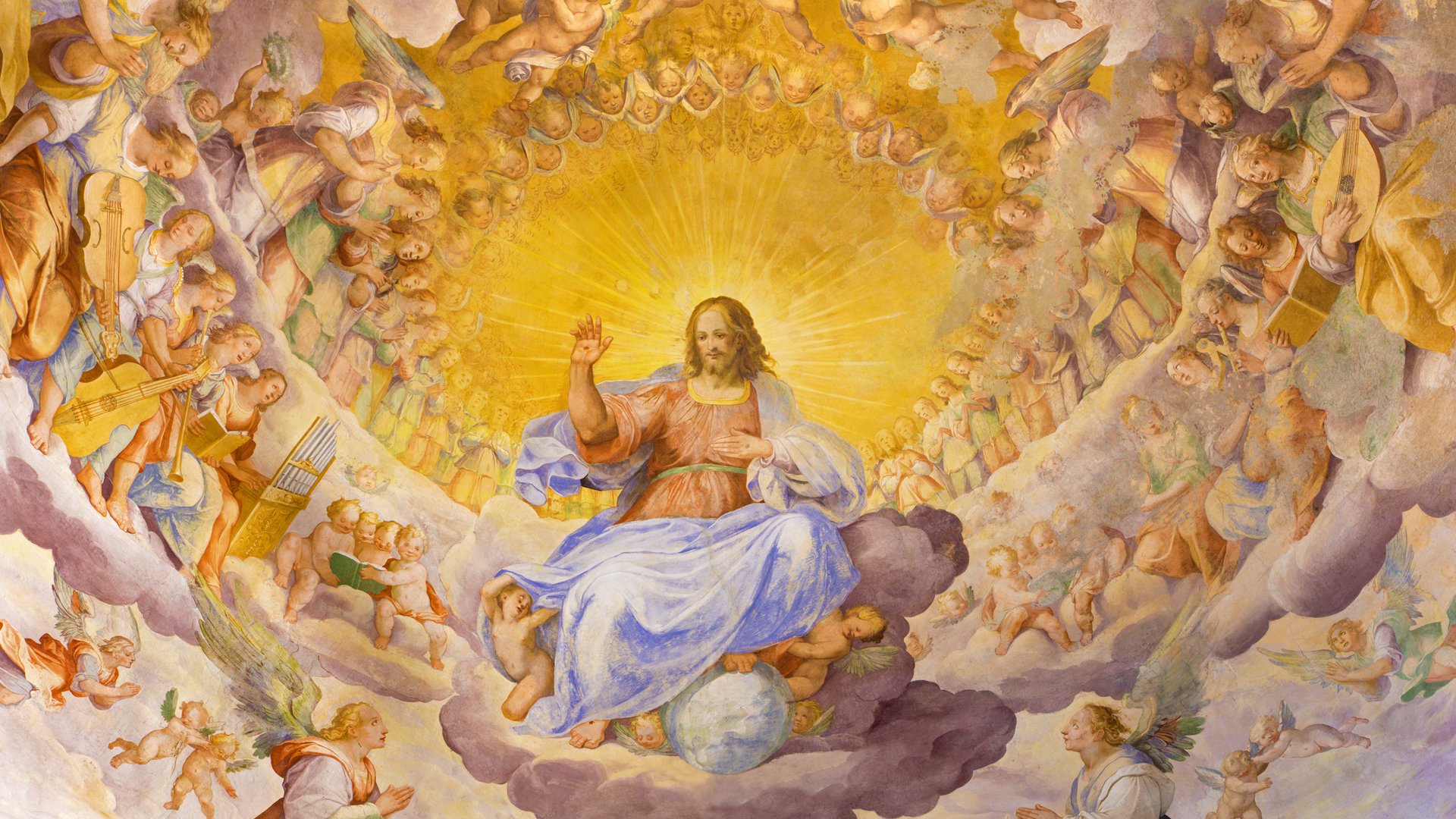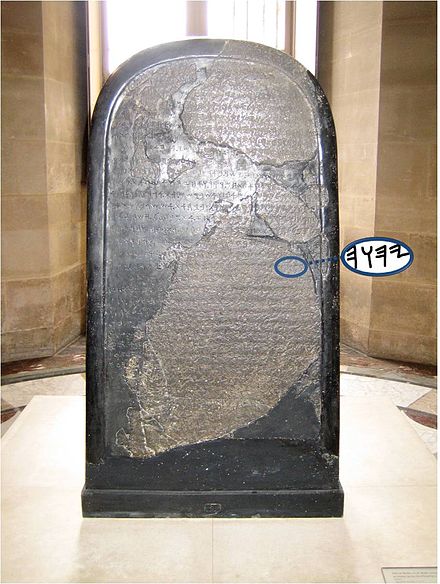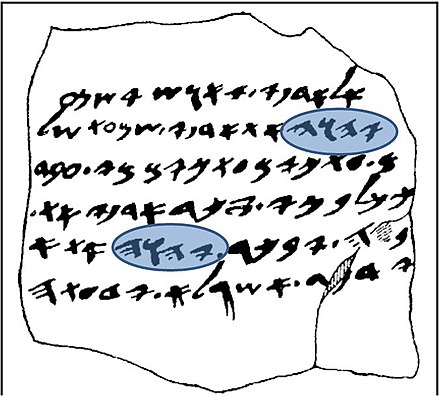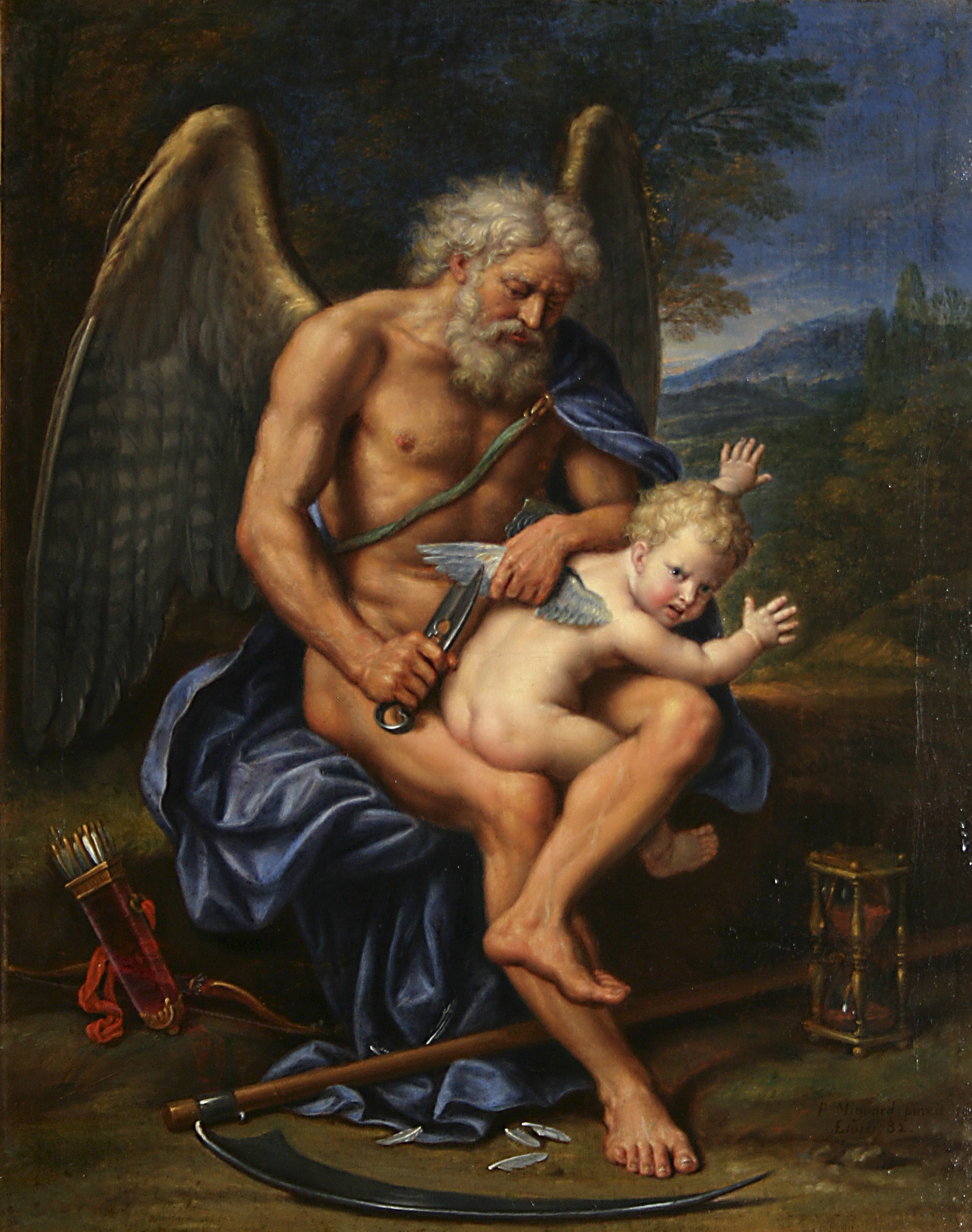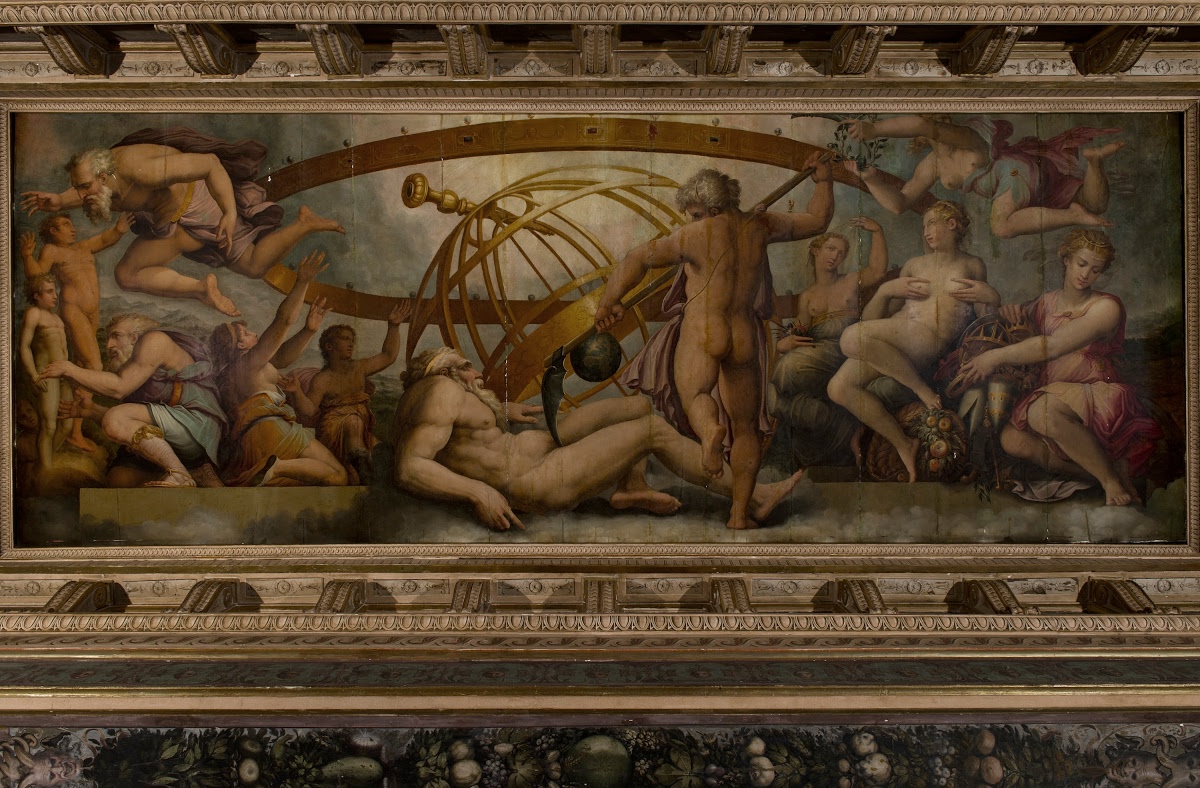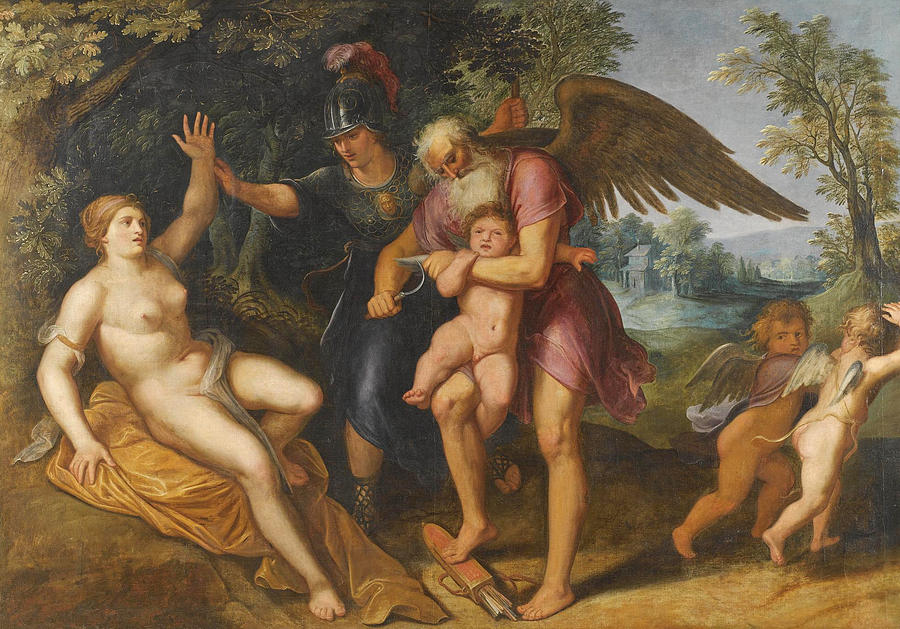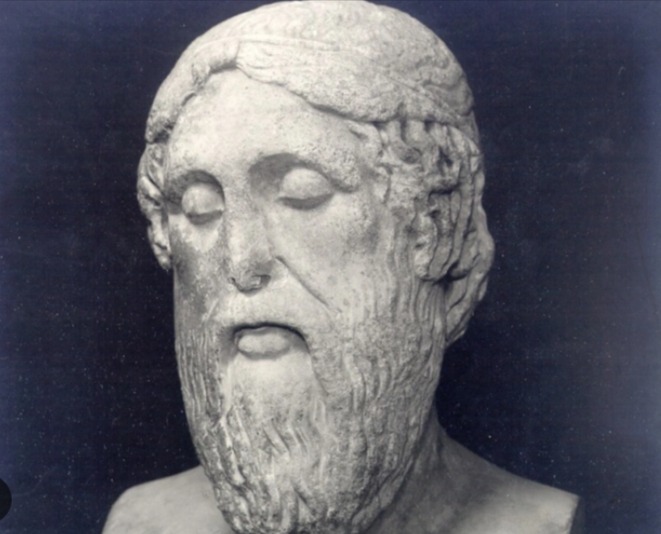

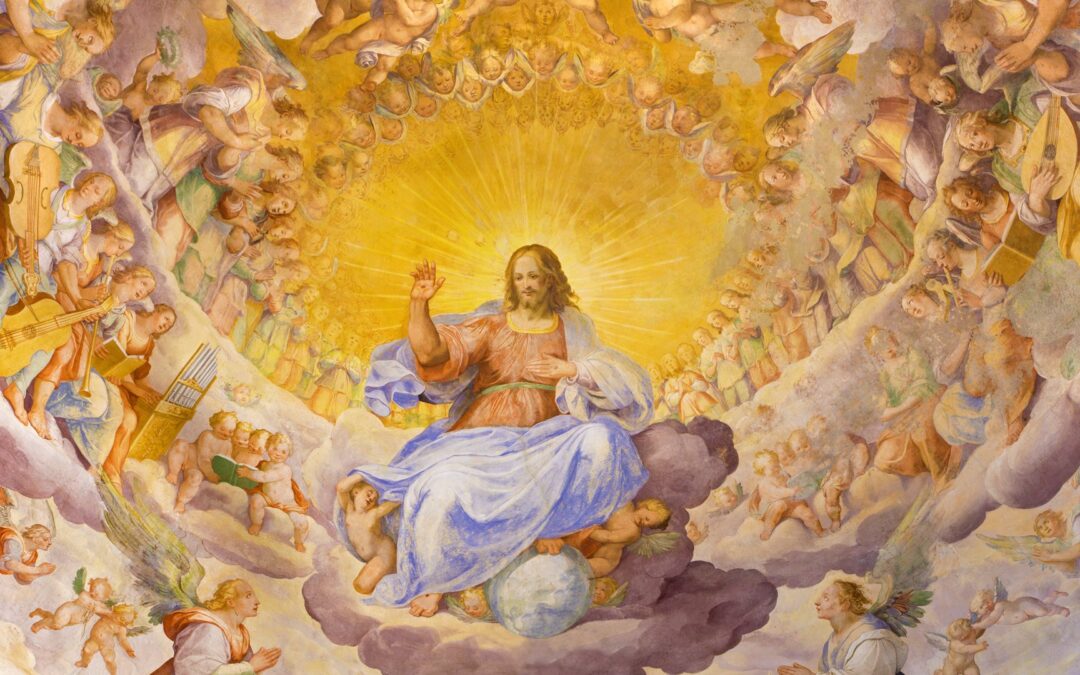
The LORD of Hosts
The Scripture lists both ‘God’ and ‘LORD’ as two very important deities that rule over humankind. The main difference between ‘God’ and ‘LORD’ is that God represents what is called the Supreme Being, the Creator, or Father of the world. While the word ‘LORD’ is a specific power, force, and or a person on earth having an honorary title that has influence and authority over others on earth and in hell.
The Supreme God in Heaven (universe) being a separate deity would perform his works (power/force) through the LORD of the earth who also worked through humans via knowledge (gnosis), philosophy, good works, and or sins. The LORD is the Almighty One, governing all creatures, guiding all events, commanding all powers both heavenly and earthly, and ruling the whole history of humanity. The LORD was also a supernatural force that worked through matter, animals, and even human bodies to become instruments or tools for God issuing punishments and rewards to people for their good or bad behaviors often called sins.
This power is also called the “LORD of Hosts” who we win favor by maintaining love and justice as it is said in Hosea; “Yes, he struggled with the angel and prevailed; he wept and sought His favor; he found Him at Bethel and spoke with Him there— 5the LORD is the God of Hosts— the LORD is His name of renown. But you must return to your God, maintaining love and justice, and always waiting on your God.”
The “LORD of Hosts” can also make the earth melt, control people’s minds, make war, and bring devastation as we read in Psalm 46:7 – “Nations rage, kingdoms crumble; the earth melts when He lifts His voice. The LORD of Hosts is with us; the God of Jacob is our fortress. Selah Come, see the works of the LORD, who brings devastation upon the earth.” The LORD of Hosts has countless angels at his command (2 Kings 6:16, 17; Psalm 68:17; Matthew 26:53). And he is “with us” – on our side, ready to help. The word ‘Hosts’ is variously translated as a mass of persons organized for, war, a campaign.
Throughout the Old Testament, we find the name LORD God also referred to as YAHWEH and JEHOVA working as an instrument of God’s mercy and his vengeance upon the earth. Yahweh, name for the God of the Israelites, represents the biblical pronunciation of “YHWH,” the Hebrew name revealed to Moses in the book of Exodus. The name YHWH, consisting of the sequence of consonants Yod, Heh, Waw, and Heh, is known as the Tetragrammaton.
The word “LORD” is written in all upper case and had the inherent ability to make or mold man into being- “And the LORD God took the man, and put him into the garden of Eden to dress it and to keep it.” (KJV, Genesis 2:15) Our LORD could be jealous, vengeful, and also loving and giving – just like we humans of today. YAH or the LORD worked in the prima material i.e., the dust and in the heavens via the winds and human anatomy, with his Prophets/Servants as the executor of God’s judgments. These wise people would become Prophets or speakers for God and saviors to the masses who believed in their knowledge and teachings.
YAWEH aka the LORD, was the ruler of the world and people as Moses emphasized to the Israelites, “The Lord [yhwh] your God [‘eloheykem] is God of gods [‘elohey ha’elohim], and Lord of lords [‘adoney ha’adonim], a great God [ha’el haggadol]” (Deuteronomy 10:17). He was, and still is, the Lord or ruler of his people, who covenant to be loyal to and obey him.
For example, in Nahum, we read the Oracle of Nineveh;
“The LORD is a jealous and avenging God; the LORD is avenging and full of wrath. The LORD takes vengeance on His foes and reserves wrath for His enemies. The LORD is slow to anger and great in power; the LORD will by no means leave the guilty unpunished. His path is in the whirlwind and storm, and clouds are the dust beneath His feet.” (Nahum 1:2) In Samuel 25:26, Abigail swore an oath to David, saying, “Now, therefore, my lord [‘adoni], as the Lord [yhwh] liveth,” and Job declared, “The Lord gave, and the Lord hath taken away, blessed be the name of the Lord [ Jehovah]” ( Job 1:21). And the Psalmist proclaimed, “Blessed be the name of the Lord from this time forth and forevermore” (Psalm 113:2; see also Enos 1:1; Alma 7:4; 3 Nephi 11:17).
In the New Testament and with the advent of our LORD Jesus Christ, this concept was personified as the Son of God or his Captain being an earthly representative of these eternal truths. Jesus was not God but his Father who worked through him proving to the Apostles and early Church authorities that he was a de facto Son of God by his words and works. Hence, God created and was in Jesus so he became a God amongst the people and earned the title LORD and his place amongst the Saints.
These humans who are metaphysically connected and honor God’s will would be called his servants, witnesses, and angels in the world like Jesus Christ and John. For example, as we read in Revelation – “The revelation of Jesus Christ, which God gave him to show to his servants the things that must soon take place. He made it known by sending his angel to his servant John, who bore witness to the word of God and to the testimony of Jesus Christ, even to all that he saw. Blessed is the one who reads aloud the words of this prophecy, and blessed are those who hear, and who keep what is written in it, for the time is near.
John to the seven churches that are in Asia: Grace to you and peace from him who is and who was and who is to come, and from the seven spirits who are before his throne, and from Jesus Christ the faithful witness, the firstborn of the dead, and the ruler of kings on earth. To him who loves us and has freed us from our sins by his blood.”
“Jesus is Lord” (Greek: κύριος Ἰησοῦς, kyrios Iesous) is a statement of faith for Christians who regard Jesus as both fully man and God. As the early Church Father, Polycarp had explained in The Letter of Polycarp to the Philippians – “the God and Father of our Lord Jesus Christ” and “our Lord and God Jesus Christ.” Justin called Jesus, a “created angel” who is “other than the God who made all things.” He said Jesus was inferior to God and “never did anything except what the Creator willed him to do and say.” Irenaeus clarifies that “God, the Creator, who formed the world, is the only God, and that there is no other God besides Him.” But that Jesus even though he is a man is also God in the Flesh indicated by the name, Emmanuel (Immanuel) – meaning “God is within man”. Clement of Alexandria said that the Son ‘is next to the only omnipotent Father’ but not equal to him.”
In the prophecies of First Isaiah, an important 8th-century BCE prophet of Judah, we learn that the Apostles through the Tribe of Judah have made a covenant with death, and with hell. Issah had prophecied against the sins of Judah, which strongly resemble the problems of our Modern world – “the rich oppress the poor, the nation squanders its economic resources on military spending, idolatry runs rampant in the land, everyone tries to cheat his fellowman, women flaunt their sexual charms in the streets, and there are many who cannot wait for a strong drink in the morning to get them through the day. One of Isaiah’s castigations warns: “Woe to those who are heroes at drinking wine, and valiant men in mixing strong drink, who acquit the guilty for a bribe, and deprive the innocent of his right!”
In humans, he worked as an instrument through the mind of the skin or body called the Sarka, and based on a person’s good deeds or evil deeds, could reward or punish us accordingly. This would make sense since YAH represents primordial matter, including the human body, which the modern science of today has already informed us is intelligent and works similarly via our genetics, lives, and our natural immune systems.
This is important for you to understand as it relates to the story of human civilization and the science of earth’s ecology and human biology. The LORD or Yahweh would represent the God of this world who in Christianity is the Devil and is referred to as the “Prince of the World.” The Hebrews (Phoenicians) had called this force Behemoth of the land and Leviathon of the water and the Ancient Greeks Kronus and in Rome, Saturn.
This is why the Biblical prophets had prayed and honored the LORD of their flesh, the Word of God, the world, and hell. They are all metaphysically and permanently connected.
To the Ancient Phoenicians (Hebrews, Canaanites) writing in 12-10 B.C., we find the name of God on the Mesha Stele, which is the oldest known inscription dating to approximately 840 B.C. Since our modern writing systems and computers do not compute the actual Pheoncian letters initially used, I will post an image below showing how they had traditionally written God’s name, which is as such;
The Mesha Stele (840 BCE) is an old Phoenician inscription dated to around 590 B.C. called the Lachish letters (Lachish Ostraca or Hoshaiah Letters) also shows the anciently used letters discovered at the excavations at the Biblical city called Lachish, which is also variously spelled as Laish, Lavish, Lasha, and Leshem. These letters are in reality, the Phoenician script.
In the Scripture, the city is located in the southwest part of Idumea, now called Judah (Joshua 10:3,5,31), which was near Mount Ida on the island of Crete. Lachish was part of the Kingdom of Judah, also known as the Tribe of Judah had originated. An island that was once a Phoenician and Israelite stronghold that today can be found in Greece.
The letters representing God are also commonly known today as the Tetragrammaton. The original Phoenician letters dating from 1100 BC to AD 300), and modern Hebrew scripts.
The Ancient Greeks were the inheritors of the Phoenician empires so they had naturally adopted the Phoenician writing system, further developing the first true alphabet, the various names of Phoenician deities, and their philosophies. The Greek concept of God was represented as matter and form (materia prima) by the words EIAO, IAO, or ΙΑΩ (Iώτα, ιαω, Αλφα, Io or Ia), which was a further interpretation of the Tetragrammaton, or name of God. These were scientific concepts of great importance in Grecian Philosophy that were allegorized and mythicized to occult these teachings from the profane. (1)
The English translation is the first letter of the Hebrew and Greek alphabet being Alpha or Aleph (Α) symbolizes the origin of the primordial substance that created all things in the material universe and the end represented by the Greek omega (Ω). The first and last letters of the traditional (Io-nic) Greek alphabet. From the Greek EIAO, IAO, or ΙΑΩ (Iώτα, ιαω, Αλφα, Io or Ia), different translations are Ya, Yah, Yahweh, Vah, Jah, Jehova, and the LORD (Κύριος, Kyrios) with various similar appellations depending on the language, religion, time in history, and the country. These ideas further developed much later into the modern four-letter Hebrew word יהוה (YHWH), the name of the national God of Israel. The four letters, read from right to left, are yodh, he, waw, and he.
In the Scripture, this philosophy is conveyed via various passages such as we find in Revelation, “I am the alpha and the omega, the beginning and the end;” “saith the Lord, which is, and which was, and which is to come, the Almighty.” (Revelation 1:8, 21:6, 22:13) And in Isaiah, “Thus says the LORD, the King, and Redeemer of Israel, the LORD of Hosts: “I am the first, and I am the last, and there is no God but Me.” (Isaiah 44:6)
To the Greek stoics, through the power of EIAO – Iώτα Αλφα, Io or Ia or Yah was the bestower of darkness and light, health and sickness, intelligence and ignorance, wealth and poverty, honor and dishonor. Plato had called it the Demiurge that worked through the mind of humans, constantly creating, fabricating, molding, and even destroying our world via the inherent power of matter that they believed possessed a peculiar form of intelligence.
The Supreme Intelligence of the universe has passed through all things, including humans; thus people are given their natural capacity for knowledge could be receptacles and instruments for the LORD. People who can be called “Sons or Prophets of God” can gain intelligence as a force of the universe to act upon the world to form matter to create and destroy – even ourselves. This is where we get the word ‘materialize’ to form matter into being and materialism, which is the doctrine of materialists and Freemasons.
As we read in Exodus 31:1-5; “Then the Lord said to Moses, “See, I have chosen Bezalel son of Uri, the son of Hur, of the tribe of Judah, and I have filled him with the Spirit of God, with wisdom, with understanding, with knowledge and with all kinds of skills— to make artistic designs for work in gold, silver, and bronze, to cut and set stones, to work in wood, and to engage in all kinds of crafts.”
From EIAO, YAH, the LORD, or primordial matter, various forms of I.O., IOS, or ION are important or Holy nouns of person, places and or things were named who helped create our world such as ἱερός (hierós, “holy”) + -εια (-EIA) → ἱέρειᾰ (hiéreia, “priestess”) Καῖσᾰρ (Kaîsar, “Caesar”) + -εια (-EIA) → Καισᾰ́ρειᾰ (Kaisáreia, “Caesarea”). And from YAH or JAH, we have many of the Biblical Prophets such as Elijah, Isaiah, Jeremiah, and the name John ( Ιωάννης, Ioannes, Joannes) as several very important Israelites such as the Apostle John the Baptist – a member of the Sanhedrin to whom God is gracious (1 Chronicles 3:24; Ἰωνᾶ, 2 Kings 25:23; Ἰωάνης, 2 Chronicles 28:12)
Our world is materialized, including humans through this peculiar substance i.e., EIAO, YAH, the LORD that is constantly creating, molding, and even destroying our world via the inherent power of matter that they believed possessed a peculiar form of intelligence. Whether corporeal or incorporeal, it had the ability to create nature, humans and through our minds was constantly creating, molding, and even destroying our world via the inherent power of matter to be molded into something else.
Including our thoughts and words, which not only create our realities, they shape the world around us. In the Scripture, this is emphasized with the passage, “In the beginning was the Word, and the Word was with God, and the Word was God. The same was at the beginning with God. All things were made by him, and without him was not anything made that was made.” (John 1-3)
In Greek Mythology, Yahweh aka the LORD or prima material force was personified in the Goddess, IO who the God Zeus loved, but due to the jealousy of Hera, Zeus transformed the maiden into a white heifer. Herodotus (i. l, &c., ii. 41) tells us that Isis was represented like the Greek Io, in the form of a woman, with cows’ horns.
Philostratus had written, “He [the C1st AD philosopher Apollonios of Tyana] reached the ancient city of Ninon [Nineveh in Babylonia], where he found an idol set up of barbarous aspect, and it is, they say, Io, the daughter of Inakhos (Inachus), and horns short and, as it were, budding project from her temple.” (Life of Apollonius of Tyana 1. 19 (trans. Conybeare Greek biography C1st to 2nd A.D.)
In the 10th century A.D., this philosophy was further developed in the Suidas, making IO (Isis) representing the moon;
“Io : A name. Inakhos (Inachus), a king of Argos, founded a city which he named for the moon, Io, for that is what Argives call the moon. He also had a daughter Io; Pekos (Pecus), who is also Zeus abducted her and fathered a daughter, Libya, by her. And Io, lamenting her ruin, fled to the Silicon Mountain and there died. Her father and her brothers, when they learned this, built a shrine to her and called the place Iopolis and remained there until the end. And they performed a ritual in her memory, banging on each other’s doors every year and saying ‘io, io!'” (Suidas s.v. Io (trans. Suda On Line) (Byzantine Greek lexicon C10th A.D.) :
According to the prophet Haggai who prophecizes; “On that day, says the Lord of Hosts, I will take you Zerubbabel, son of Shealtiel, my servant, and wear you like a signet ring; for it is you whom I have chosen. This is the word of the Lord of Hosts’” (Hag. 2:23).
“And unto the angel of the church in Smyrna write; These things saith the first and the last, which was dead, and is alive.” (Revelation 2:8)
“When I saw Him, I fell at His feet like a dead man. But He placed His right hand on me and said, “Do not be afraid. I am the First and the Last, the Living One. I was dead, and behold, now I am alive forever and ever! And I hold the keys of Death and of Hades. Therefore write down the things you have seen, and the things that are, and the things that will happen after this.” (Revelation 1:8)
SOURCES:
1. Hermes: Or, A Philosophical Inquiry Concerning Universal Grammer by James Harris · 1825 pg 308
2. All other sources can easily be found online or in the Scripture
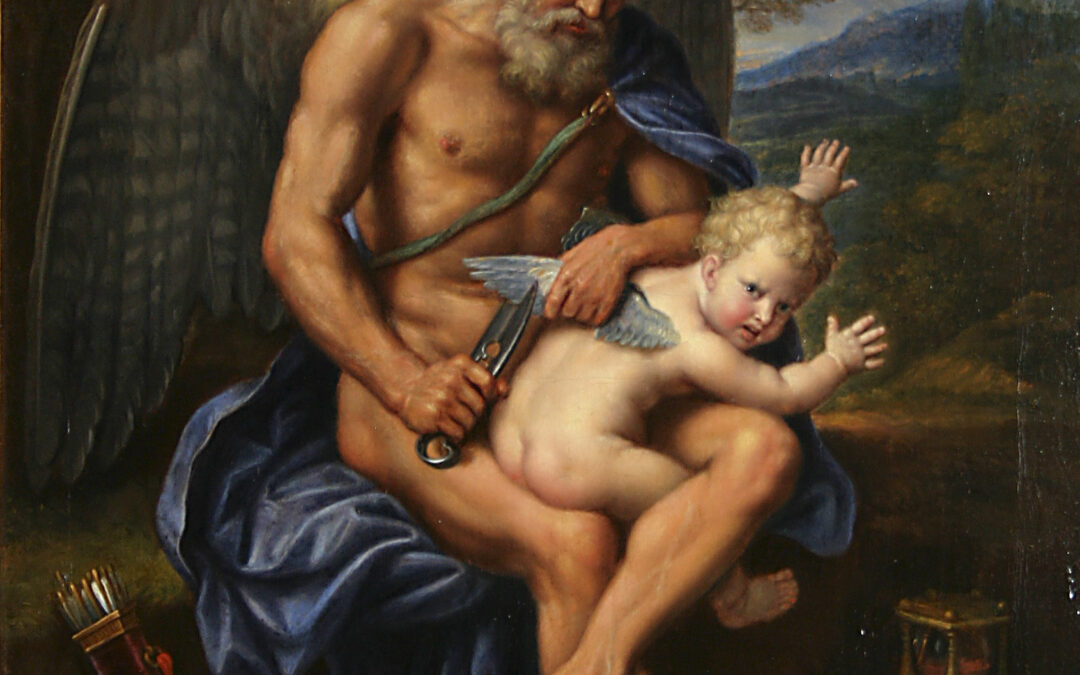
Kronus: The God of Death Within Our Bowels and the Earth’s Magnetic Biosphere
In Greek mythology, Kronus (Cronus or Kronos) was the Lord of Justice, Evil, and the Harvest, and in Rome, he was allegorically called Saturn. He was the leader of the first generation of the Titans who overthrew his father, Ouranos Our-anus, and ruled during the mythological Golden Age.
To prevent any of his sons or daughters from ruling in his stead, he had a habit of “eating them.”
The first source in history to give us the origins of this myth is the Phoenician historian and a priest of Byblos, Sanchuniathon (Phoenician: 𐤎𐤊𐤍𐤉𐤕𐤍) who tells us Môt means Death but also represents Kronus. He says some people call it by the name Ilus (Mud), which is described as a “putrefaction of a watery mixture,” from this sprung all the seed of the creation and the generation of the universe. Sanchuniathon also explains that this Môt AKA Ilus (Mud) ‘s name is also Kronus, whose father is Our-anus, situated in the middle of the earth. He had written;
“In the thirty-second year of his power and reign, Ilus, who is Kronus, having laid an ambuscade for his father Ouranus in a certain place situated in the middle of the earth, when he had got him into his hands dismembered him over against the fountains and rivers. There Ouranus was consecrated, and his spirit was separated, and the blood of his parts flowed into the fountains and the waters of the rivers; and the place, which was the scene of this transaction, is shewed even to this day.”
The history from Sanchuniathon can be verified in the Hebrew (Phoenician) Scripture, Môt (Maweth, Mot, Mavet(h) means Death and is sometimes personified as a devil or angel of Death (e.g., Habakkuk 2:5; Job 18:13). In both the Book of Hosea and the Book of Jeremiah, Maweth/Mot is mentioned as a deity to whom Yahweh can turn over Judah as punishment for worshiping other gods. Philo of Byblos described môt (Muth), as the equivalent of both Thanatos (Death personified) and Pluto.
We learn from Plato that he bounds his victims in his famous chains that are inescapable.
“[Has] Kronos (Cronus) bound them with his famous chains?” His chains are inescapable. (Plato, Cratylus 403e)
Where does he keep these people in chains?
Hesiod says that Kronos and the Titans live under Tartarus; “The Titanes under Tartaros (Tartarus) who live with Kronos (Cronus).” (Hesiod, Theogony 820)
Homer also writes in the Ilias that Tartarus binds them; “The undermost limits of earth and sea, where Iapetos and Kronos seated have no shining of the sun-god Hyperion to delight them nor winds’ delight, but Tartaros stands deeply about them.” (Iliad 8. 479)
Tartarus in Greek mythology is the deep abyss and a type of underground dungeon of torment and suffering for the wicked and as the prison for the Titans and, in later myths, for mortals who committed unforgivable sins. According to the Greek poets, Homer and Hesiod, Tartarus is a type of spherical force that reaches the great cosmic pit beneath the earth. It is located “as far beneath the house of Hades as from earth the sky lies, and he is both a deity (god or force) and a place in the underworld.”
Hesiod (c. 700 BCE) depicts it as Misty Tartarus’, stating that it was “as far below the earth as heaven is from the earth” (722-25). He describes Tartarus “as a vast chasm, both dismal and dank and a place of decay,” and states, “Tartarus is one of the first beings to have emerged at the creation of the universe and was the opposite of Gaia (Earth).” Hesiod said it is the unfruitful sea (pontos) where there are shining gates and an immoveable threshold of bronze having unending roots, and it is grown of itself.”
In the Orphic cosmogony, Kronus was the incorporeal and primordial god of time who emerged self-formed at the dawn of creation. He was often depicted in serpentine form, with three heads–a man, a bull, and a lion. His consort, the serpentine goddess Ananke (Inevitability), enveloped the primordial world-egg in their coils and split it apart to form the ordered universe of earth, sea, and sky. After this act of creation, the couple circled the cosmos driving the rotation of heaven and the eternal passage of time.
In the Orphic theogonies from the 2nd Century B.C., genealogical works similar to the Theogony of Sanchuniathon and Hesiod details the beginning of this myth concealing this science;
“Originally there was Hydros (Water), he [Orpheus] says, and Mud, from which Ge (Gaea, the Earth) solidified : he posits these two as first principles, water and earth . . . The one before the two [Thesis, Creation], however, he leaves unexpressed, his very silence being anintimation of its ineffable nature.
The third principle [Khronos (Chronos), Time] after the two was engendered by these–Ge (Earth) and Hydros (Water), that is–and was a Serpent (Drakon) with extra heads growing upon it of a bull and a lion, and a god’s countenance in the middle; it had wings upon its shoulders, and its name was Khronos (Chronos, Unaging Time) and also Herakles (Heracles). United with it was Ananke (Inevitability, Compulsion), being of the same nature, or Adrastea, incorporeal, her arms extended throughout the universe and touching its extremities.” (Orphica, Theogonies Fragment 54 from Damascius C3rd – C2nd B.C.)
Orphica, Rhapsodies Fragment 66 :
“This Khronos (Chronos, Unaging Time), of immortal resource, begot Aither (Aether, Light) [upper air] and great Khaos (Chaos, the Chasm) [lower air], vast this way and that, no limit below it, no base, no place to settle. Then great Khronos fashioned from (or in) divine Aither (Aether) a bright white egg [from which Phanes was born].”
Orphica, Epicuras Fragment (from Epiphanius);
“And he [Epicurus] says that the world began in the likeness of an egg, and the Wind [the entwined forms of Khronos (Chronos, Time) and Ananke (Inevitability)] encircling the egg serpent-fashion like a wreath or a belt then began to constrict nature.
As it tried to squeeze all the matter with greater force, it divided the world into the two hemispheres, and after that, the atoms sorted themselves out, the lighter and finer ones in the universe floating above and becoming the Bright Air [Aither (Aether)] and the most rarefied Wind [probably Khaos (Chaos, Air)], while the heaviest and dirtiest have veered down, become the Earth (Ge) [Gaia], both the dry land and the fluid waters [Pontos the Sea]. And the atoms move by themselves and through themselves within the revolution of the Sky and the Stars, everything still being driven round by the serpentiform wind [of Khronos and Ananke].”
As it relates to the humans, Hesiod, said the Kronus was the youngest son of Rhea and the most terrible of all her children;
“She [Gaia, Earth] lay with Ouranos (Uranus, Sky) and bare deep-swirling Okeanos (Oceanus), Koios (Coeus) and Krios (Crius) and Hyperion and Iapetos (Iapetus), Theia and Rhea, Themis and Mnemosyne and gold-crowned Phoibe (Phoebe) and lovely Tethys. After them was born Kronos (Cronus) the wily, youngest and most terrible of her children, and he hated his lusty sire . . .
And he [Ouranos] used to hide them all [Hekatonkheires (Hecatoncheires) and Kyklopes (Cyclopes), brothers of the Titanes] away in a secret place of Earth (Gaia) so soon as each was born, and would not suffer them to come up into the light: and Ouranos (Sky) rejoiced in his evil doing. But vast Gaia (Earth) groaned within, being straitened, and she made the element of grey flint and shaped a great sickle, and told her plan to her dear sons [the six Titanes].
And she spoke, cheering them, while she was vexed in her dear heart: ‘My children, gotten of a sinful father, if you will obey me, we should punish the vile outrage of your father; for he first thought of doing shameful things.’ So she said, but fear seized them all, and none of them uttered a word. But great Kronos the wily took courage and answered his dear mother: ‘Mother, I will undertake to do this deed.’
So he said: and vast Gaia (Earth) rejoiced greatly in spirit, and set and hid him in an ambush, and put in his hands a jagged sickle, and revealed to him the whole plot.” (Theogony 133 ff -trans. Evelyn-White) :
Ovid tells us about the human anatomical nature in Fasti that Kronus eats his children, and then they become “entombed in his bowels,” and then a mysterious stone in the form of Zeus gets lodged in what Ovid calls a gullet, which means his esophagus. He had written;
“Saturnus [Kronos (Cronus)] received this oracle: ‘Best of kings, you shall be knocked from power by a son.’ Jabbed by fear, he devours his offspring as they are born and entombs them in his bowels. Rhea often complained of much pregnancy and no motherhood and mourned her fertility.
The story of Cronus eating his children and his name also being Mot AKA Ilus (Mud) ‘s, which is a “putrefaction of a watery mixture,” whose father is Our-anus situated in the middle of the earth is interpreted by some people like me as an allegory to a specific aspect of time held within Cronus’ sphere of influence.
This sphere, I contend, deals with an ancient science that connects Kronus via the earth’s magnetic biosphere, as I explained in my essay, Human Magnetoreception: The Science of the Noosphere vs. the Animal Sphere to our Stomachs or Gi Tracts, which science has proved is our second brain – The Realm of Kronus. In Christianity, this is the devil’s lair, and Satan is chief of his legions of Demons, i.e., human beasts, which the Hebrews called Behemoths. It is Carl Jung’s collective unconscious.
As we learn from Apollonius Rhodius;
“A number of creatures whose ill-assorted limbs declared them to be neither man nor beast had gathered round her [Kirke (Circe) the witch] like a great flock of sheep following their shepherd from the fold, Nondescript monsters such as these, fitted with miscellaneous limbs, were once produced spontaneously by Ge (Gaea, the Earth) out of the primeval mud, when she had not yet solidified under a rainless sky and was deriving no moisture from the blazing sun. But Khronos (Chronos, Time), combining this with that, brought the animal creation into order.” (Argonautica 4. 673 ff trans. Rieu C3rd B.C.)
I believe that it can be considered as a type of animal mind or, Biblically speaking, the mind of the flesh i.e., Sarka that is connected to this “putrefaction of a watery mixture,” AKA fungi/molds whose sphere of influence via their endless mycelium (chains, fetters) and spores (seeds) is within Tartarus or within the earth underneath our feet.
As I have explained in many numerous essays, molds/fungi have been scientifically proven to cause illness, disease often from working within our bowels and also mental psychopathologies, which can influence our thoughts in a bad way, which may explain Cronus’ violent nature and without hesitation, he eats his children. He is often depicted holding a sickle or ravaging some human while still alive.
As Ovid relates, Kronus, with his anger stirs the mighty Titans who are imprisoned in a “black grove with a triple wall,” which would be a depiction of the molds/fungi’s legislating abilities of humankind. Ovid had written;
“Saturnus [Kronos (Cronus)] was thrust from his realm by Jove [Zeus]. In anger he stirs the mighty Titanes to arms and seeks the assistance owed by fate. There was a shocking monster born of Mother Terra (Earth) [Gaia], a bull, whose back half was a serpent. Roaring Styx [as an ally of Zeus] imprisoned it, warned by the three Parcae [Moirai, Fates], in a black grove with a triple wall.
Whoever fed the bull’s guts to consuming flames was destined to defeat the eternal gods. Briareus [or Aigaion, an ally of Kronos] slays it with an adamantine axe and prepares to feed the flames its innards [and so ensure the victory of the Titanes]. Jupiter [Zeus] commands the birds to grab them; the kite brought them to him and reached the stars on merit.”
The rule of Kronus is not indefinite. In the Greek Myths, we learn that he rules a “space in time” and is eventually conquered and bound by Zeus or Jove.
The Roman rhetorician C1st B.C., Cicero had written;
“Another theory also, and that a scientific one, has been the source of a number of deities, who clad in human form have furnished the poets with legends and have filled man’s life with superstitions of all sorts. This subject was handled by Zeno and was later explained more fully by Cleanthes and Chrysippus. For example, an ancient belief prevailed throughout Greece that Caelus (the Sky) [Ouranos (Uranus)] was mutilated by his son Saturnus [Kronos (Cronus)], and Saturnus himself thrown into bondage by his son Jove [Zeus]: now these immoral fables enshrined a decidedly clever scientific theory.
Their meaning was that the highest element of celestial ether or fire [Ouranos the Sky], which by itself generates all things, is devoid of that bodily part which required union with another for the work of procreation. By Saturnus [Kronos] again they denoted that being who maintains the course and revolution of the seasons and periods of time, the deity so designated in Greek, for Saturnus’ Greek name is Kronos (Cronus), which is the same as khronos, a space of time.
The Latin designation ‘Saturnus’ on the other hand is due to the fact that he is ‘saturated’ or ‘satiated with years’ (anni); the fable is that he was in the habit of devouring his sons–meaning that Time devours the ages and gorges himself insatiably with the years that are past. Saturnus is bound by Jove [Zeus] in order that Time’s courses might not be unlimited, and that Jove might fetter him by the bonds of the stars.” (Cicero, De Natura Deorum 2. 24 – trans. Rackham)
As the Greek Myths tell us, He was married to the “Goddess of the earth,” Rhea, by whom he became the father of Hestia, Demeter, Hera, Hades, Poseidon, and Zeus. Cheiron is also called a son of Kronus. (Hesiod. Theog. 137, 452, &c.; Apollod. i. 1. § 3, &c.) At the instigation of his mother, Cronus unmanned his father for having thrown the Cyclopes, who were likewise his children by Ge, into Tartarus. Out of the bloodshed sprang up the Erinyes. When the Cyclopes were delivered from Tartarus, the government of the world was taken from Uranus and given to Cronus, who in his turn lost it through Zeus.
After Rhea secretly gave birth to Zeus in Crete, to prevent Kronus from eating the infant, she handed Cronus a stone wrapped in swaddling clothes, also known as the Omphalos Stone, which he swallowed, thinking that it was his son, Zeus.
Once Zeus had grown up, he forced his father Kronus into puking out their children (Poseidon, Hera, Hades,etc.) and Zeus declared war on Kronos. He was said to have made him regurgitate the contents of his stomach in reverse order: first, the stone, which was set down at Pytho under the glens of Mount Parnassus to be a sign to mortal men, and then his two brothers and three sisters.”
The Titans were conquered by Zeus and cast into the pit of Tartarus reversing the shift in cosmological terms from being holders of heaven to bearers of the entire cosmos. According to Pindar and Aeschylus, the Titans were eventually released from the pit through the clemency of Zeus.

Prince of the Power of the Air
“Your adversary is the Devil, as a roaring lion, walketh about, seeking whom he may devour.”
Satan is said to be the “Prince of the Power of the Air.” Not a power over the air or in the clouds, but a secret power that is contained “within or dwelling in the region of the air.”
In Ephesians 6:12 these powers of evil are described as spiritual wickedness in high places, and we need to put on “our armor of God” so we can “stand our ground” against evil. “Put on the full armor of God so that you can make your stand against the devil’s schemes. For our struggle is not against flesh and blood, but against the rulers, against the authorities, against the powers of this world’s darkness, and against the spiritual forces of evil in the heavenly realms. Therefore take up the full armor of God, so that when the day of evil comes, you will be able to stand your ground, and having done everything, to stand.”
The Greek translation of the word evils is poneras or ponéros, which is variously translated as immoral, wicked, or vicious, and in the time of Plato as a type of disease that causes people to be spiritually or mentally blind. If a person was possessed by the devil or a demon, they were also considered mentally blind, which was represented by the Greek word, τυφλὸς (typhlos). As we read in Matthew 12:22Adj-AMS “Then a blind (typhlos | τυφλός | nom sg masc) and mute demoniac was brought to him, and he healed him so that the mute could both speak and see and in Matthew 15:14, the mentally blind act as teacher or guides to other people who are mentally blind so they fall into a pit. Typhlos – to be mentally blind is also associated with the hand of the Lord – a mist of darkness so people do not see the sun or light.
This state of being or human disease is connected to what is called the bread of the leavened. The Biblical interpretation of leaven was that it had a secret penetrating and diffusive power. A moral influence that is outside of the body that is unseen and secret in how it operates upon a person generally, whether good or bad. To be leavened state of being causing people who sin, lie, and were corrupt to become diseased, which caused them to literally rot and ferment while they were still alive like yeast or fungi. It also spreads from person to person by contact of a particle with particle, but is like a tree (dendron), changing the people’s genes it comes in contact with into its own nature, with like a virus the edits their very DNA.
This yeast and leaven are everywhere. It comes from the smallest of seeds yet grows into the largest plant.
In fact, the Kingdom of Heaven is like yeast in which man has an intricate part in creating as Jesus said in Mathew 13-33, “The kingdom of heaven is like yeast that a woman took and mixed into about sixty pounds of flour until it worked all through the dough.” and in Matthew 13:24, Jesus says it from man’s good seed which could be the opposite of sin via his good thought, ideas, and actions, “The kingdom of heaven is like a man who sowed good seed in his field.”
This leavening power of yeast in the air not only changed their DNA, but it also makes humans appear to be dead or like zombies who sin and are disobedient, becoming de facto the children of wrath as it is said in Ephesians 6:11-12;
“And you were dead in your trespasses and sins, in which you used to walk when you conformed to the ways of this world and of the ruler of the power of the air, the spirit who is now at work in the sons of disobedience. All of us also lived among them at one time, fulfilling the cravings of our flesh and indulging its desires and thoughts. Like the rest, we were by nature children of wrath.”
These children of wrath are considered unclean and have a de facto ruler over them, the real “prince of the devils,” and the individual and unclean spirits of wickedness (Matthew 9:34; Matthew 12:24). In the air, these unclean spirits and demons appear to travel and enter and mind control these types of humans. Humans who seem good on the outside put on a kind of masquerade trying to fool people (mentally blind) into thinking they are angels of light.
Hence, the mentally and spiritually blind leading those of like-kind to their destruction.
Depicted as the Evil One and the angel of darkness masquerading as an angel of light, he is also described as “the prince or ruler,” with a superhuman power prevailing over the world and working in the children of disobedience. Through this mysterious power that we know mainly travels through the air, he can influence people by laying a mental snare of sorts tempting them to do evil and, in doing so, controlling their thoughts and actions.
The humans that Satan controls and thus rules over are both unregenerate humankind and the multitude of demons. Unregenerate people are ignorant and not repentant, i.e., sorry for their evil actions and being bad. They become blind, corrupt, fake, and liars who have a sense of entitlement and are unwilling to change their ways. These people are supernaturally bonded together by hell or Tartarus and even though they be unaware.
Soldiers of Satan allowed to carry out their evil deeds for an appointed amount of time.
When certain angels revolted against God, they were cast down to hell, called by the Greeks Tartarus, and they remain there in bonds until the day of judgment (2 Peter 2:4, Jude 1:6), so they are restrained from further evil activity. Unfortunately, many other spirits have rebelled, but God in His wisdom has allowed them to retain their freedom, and act as minions of Satan and assist in his nefarious activities.
These snares can also derive from food like bread, and even the Savior Jesus has the ability to issue punishments via the evil one for their transgression as it did with the son of Simon Iscariot, Judas as we read in John 13:21-27 – When they asked who it would be, Jesus said: “It is the one to whom I give this piece of bread when I have dipped it in the dish.” He then dipped a piece of bread in a dish and handed it to Judas, identified as the “son of Simon Iscariot.” After Judas received the piece of bread, “Satan entered into him.”
In this story, we are told that Jesus had chosen the son of Simon Iscariot, Judas, to be the person Satan would enter and control. Judas was Jesus’ brother by blood, and thus Judas would be the human representative of Satan’s power on earth. The name Judas is also translated as Judah. This power has a central place or location as being the originating homeland of Jesus and the 12 Apostles. Both Jesus and Judas were from the Tribe of Judah, who has their origins on the island of Crete in a place called Idumea, as I have written many times before.
This Simon Iscariot, as I have explained in various essays, is known by many different names like Simon Magus (Magician), Simon the Sorcerer, Simon the Samaritan, The First Gnostic, The False Prophet, and even was called Barjesus who was said to have the “Great Power of God.” In the Scripture, he is also known as an angel called a cherub and legal prosecutor for God who became the defacto God and Prince of this World. Even the Church Fathers concur, having bestowed the title of Satan on Simon Magus.
This power of God is against the wicked. God’s power will not be the sinner’s shield to defend him but a sword to wound him. God’s power will bind the sinner in chains. His power serves to revenge the wrong done to his mercy. He will be Almighty to damn the sinner. Now, in what condition is every unbeliever? God’s power is engaged against him, and it is a fearful thing to fall into the hands of the living God.’ Heb 10:31.
Not only is Satan, i.e., Simon, have the Power of God and the Dark Ruler through this mysterious force, but he also can mind control and punish unclean spirits and cure the good spirits. As if Satan works through all of humanity via a spiritual receptacle or type of mainframe computer by the air we breathe, the ground we walk, and the very biomechanical systems that control our bodily functions.
As mentioned above, Jesus gave Judas (Simon, BarJesus, etc.) a piece of bread, causing Satan to enter into him. Hence, we know that power of Satan is a type of force that can travel or possess multiple people who are called legions that have been around since the beginning of time. Satan and his legions were said to be created by God at the beginning of time and the end, as we read in Mark 13:19 from the beginning of the creation and in Matthew 19:4 that He who created [them] from the beginning made. In Revelation 21, we learn that Satan is seated on a special throne doing a specific type of work in the world for God as the “the Alpha and Omega, the beginning (first) and the end (last). “
He is called a ruler and chief, which is variously translated from the Greek ἀρχή (arché – archomai) and is where we get the word archon. )beginning, origin, first; ruler, power, authority; position of authority)’
“In order that now, through the church, the manifold wisdom of God should be made known to the rulers (archais | ἀρχαῖς | dat pl fem) and authorities in the heavenly realms.” (Ephesians 3:10)
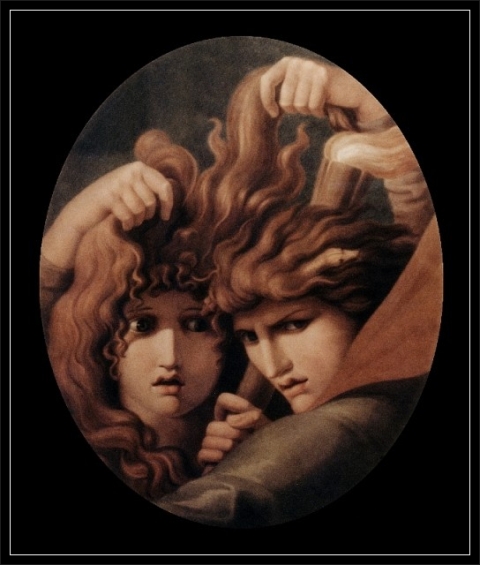
Erinyes: Those who beneath the earth punish whosoever has sworn a false oath
The Erinyes represent a powerful force of darkness in Greek Mythology that live under the ground within the earth. They dwell in the underworld of Tartarus where even the gods had feared them for it was the Erinyes who maintained the established the natural order of things.
The Erinyes are described in Eumenides , a play written by Aeschylus (c 525 – 455 BCE), the “Father of Greek Tragedy,” as Gorgon-like with dark and lothly with loathsome ooze dripping from their eyes, rejoicing in the smell of blood and suck the blood of men. They have the ability to punish humans for crimes against the natural order and their ancestors during life and after death. The glories of men waste away against their black-robed assault.
The principle message of their wrath is a simple one, “an eye for an eye, and a tooth for a tooth.”

They describe themselves in the chorus of Eumenides, “We are the eternal children of night, and called curses under the earth. All-pervading destiny has assigned us their lot to pursue murderers of kindred until the earth covers them, and dying, they are not freed from us.”
When swearing an oath to Achilles in Homer’s Illiad, he calls on Zeus, Earth, Sun, and “the Erinyes,” who under earth take vengeance on men, whoever has … (the Furies) merely working their magic from under earth or if this punishment is inflicted on those under the earth, that is, the dead.
The first historical mention was discovered written on the ancient Linear B tablets found at the City of Gnosis – Knossos on the Holy Island of Crete, in the following forms: e-ri-nu e-ri-nu-we.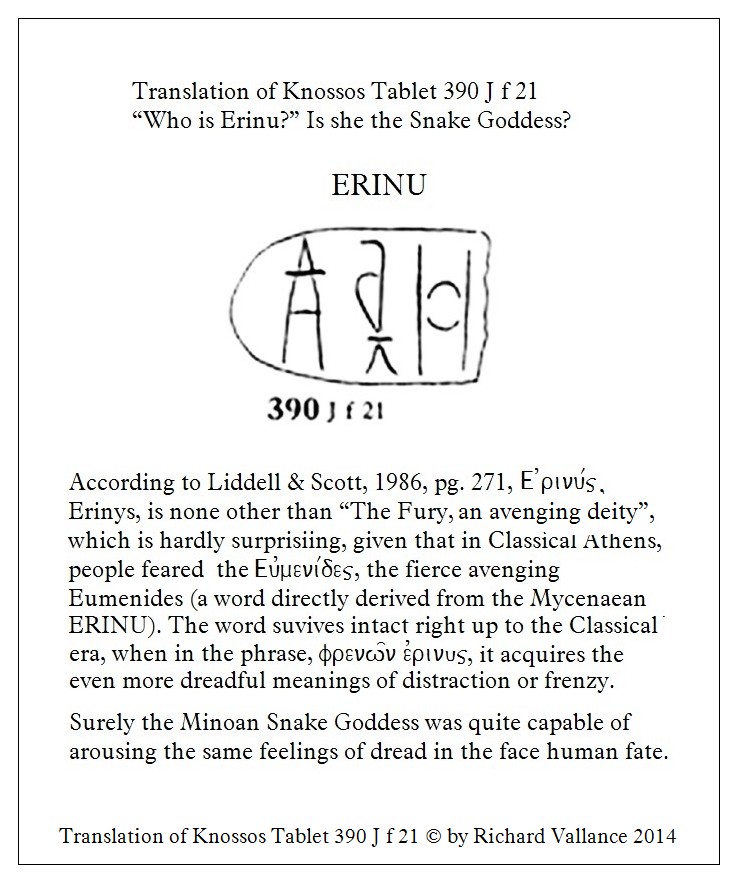
This connection to Crete also aligns with Homer’s Illiad. “One, from Ida, Most Glorious, Greatest, and Helios, You Who watch over all things and listen to all things, and rivers and earth and You Who under the earth punish weary human beings, whoever has sworn a false oath, You be witnesses, guard the oaths of trust”.
The name Ida would correspond to Mount Ida on Crete near Knossos. It is from this location where Josephus writing in the 1st century BC said the Idumeans would derive their name to become who we know as the Tribe of Idumeans or we know of today as the Tribe of Judah.
According to Hesiod’s Theogony, when the Titan Cronus castrated his father Uranus and threw his genitalia into the sea, the Erinyes and the Meliae emerged from the drops of blood when it fell on the earth (Gaia), while Aphrodite was born from the crests of seafoam.
Writing at a later date, the Roman poet Virgil named three in the Aeneid; Alecto or Alekto (“endless”), Megaera (“jealous rage”), and Tisiphone or Tilphousia (“vengeful destruction”).
Ovid writes in Metamorphoses, “(The Erinys) Tisiphone seized a torch steeped in blood, put on a robe all red with dripping gore and wound a snake about her waist, and started from her home; and with her as he went were Luctus (Grief) [Penthos] and Pavor (Dread), Terror (Terror), and Insania (Madness) (Mania) too with frantic face.”
Dante in Canto IX of the Inferno had mentioned the three deities of Erinyes who confront the poets at the gates of the city called Dis. Dante describes the Erinyes as three maiden goddesses, Demeter was worshipped under the title of Erinys in the Arkadian town of Thelpousa.
The Athenians who were Brothers with the Cretans had a sanctuary in Athens that Pausanias said was dedicated to the Erinyes. He writes;
“Hard by [the Areopagos the murder court of Athens] is a sanctuary of the goddesses which the Athenians call the August, but Hesiod in the Theogony calls them Erinyes (Furies). It was Aeschylus who first represented them with snakes in their hair.
But on the images neither of these nor of any of the under-world deities is there anything terrible. There are images of Pluto, Hermes, and Earth, by which sacrifice those who have received an acquittal on the Hill of Ares; sacrifices are also offered on other occasions by both citizens and aliens.”

